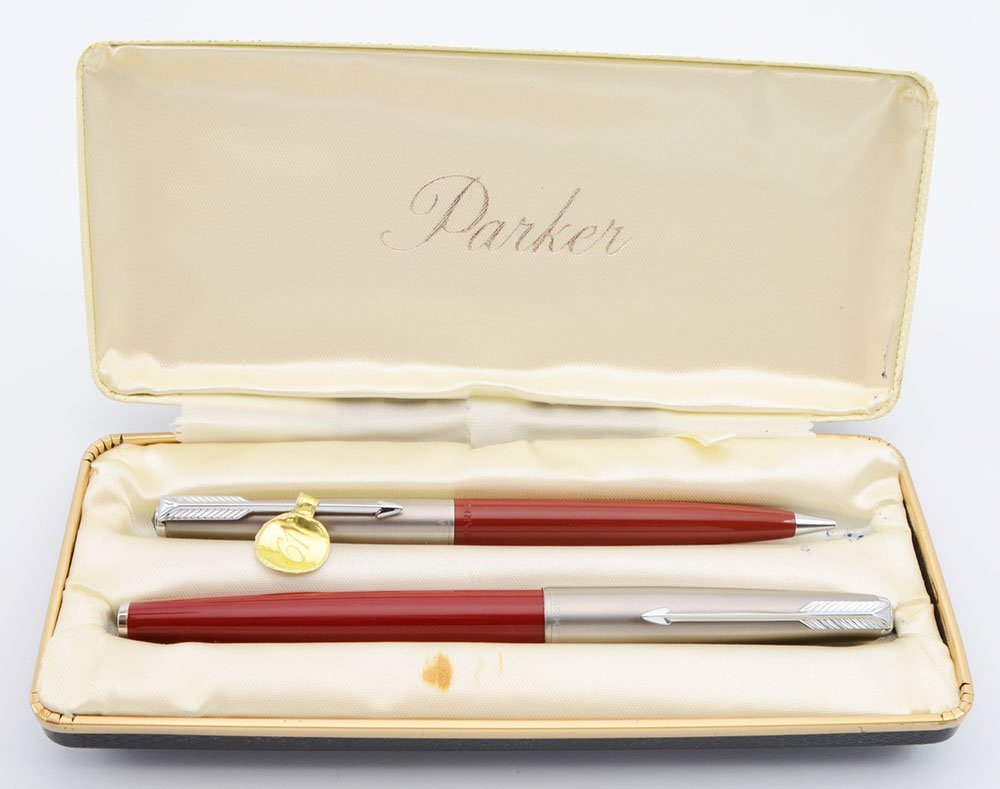Product Description
Type Fountain pen with unique filling system and mechanical pencil set.
Product Name Parker 61 - Mark II (as distinguished by wider clutch ring)
Manufacturer and Year Parker, USA -- after 1962 (This is when the Mark II was launched)
Length The fountain pen is 5-3/8"; the mechanical pencil is 5-1/8"
Filling System The fountain pen has the capillary filling system which is unique to this model. See further details below. The mechanical pencil takes .9mm leads.
Color Brushed stainless steel "Lustraloy" caps. Red barrels. Double pearlescent jewels on either end of the pen and at the end of the barrel of the mechanical pencil.
Nib Medium gold nib, very smooth.
Condition Near mint condition with no cracks, dents, or dings, in box, with paperwork. This is a lovely, elegant, shiny set in the original Parker box with ecru silk lining. The fountain pen has light wear and a small nick just above the clutch ring. The cap is lovely. The mechanical pencil has microscratching on the barrel. The cap is perfect. The top jewel has a small chip and is scratched. The clip looks nice. The clip has the original $7.50 price tag attached. All imprints are clear.
Here is how you fill a Parker 61, and an insight into how the pen actually works. Unscrew the barrel and stick the back end of the pen (aka the capillary cell) into a bottle of ink. Wait a few minutes (probably more like a half hour when you first start one of these older used ones), and let the ink wick up into the capillary cell. The cell contains a sheet of perforated plastic that has been given a 3-D pattern resembling tire tread, and rolled up. The perforations allow ink to seep between the rolled-up layers, and the tread pattern maintains space between the layers. In the middle of this tube, which runs the entire length of the capillary cell, is the feed. To keep things clean, the capillary cell has on a coating of teflonon the outside that is intended to shed ink as the user withdraws the pen from the ink bottle, leaving very little ink to be wiped off. The end of the barrel contains a spring-loaded thingey which covers the open end of the capillary tube, but still allows it to vent.









